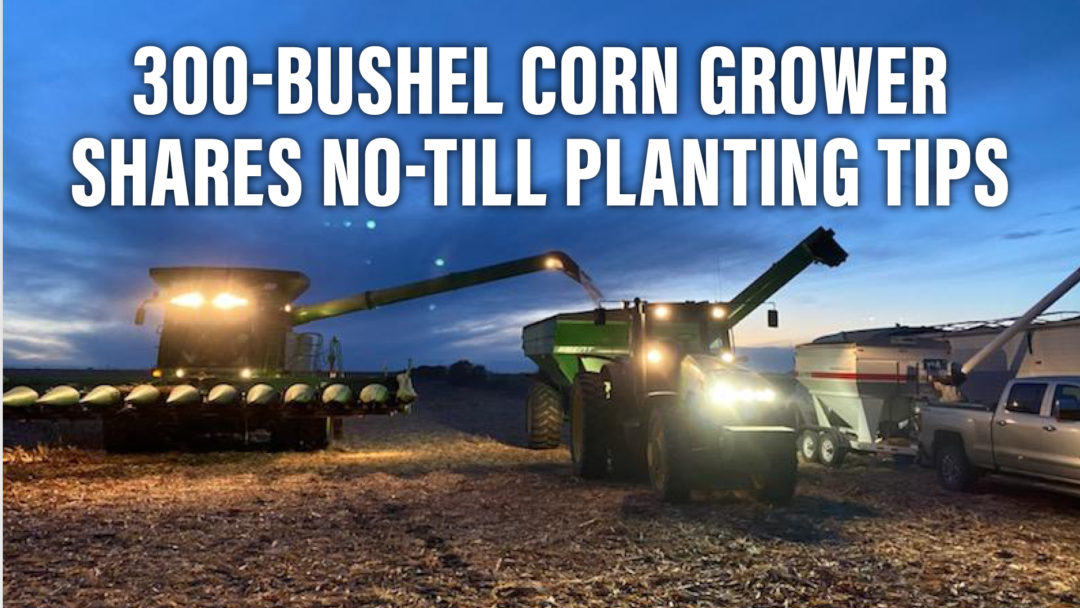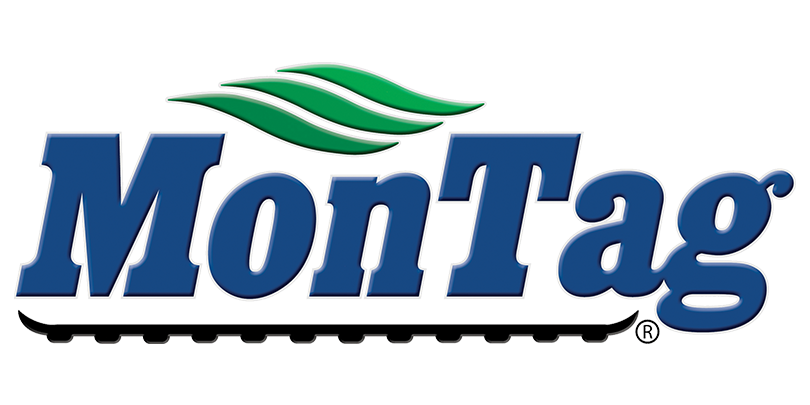On this episode of Conservation Ag Update, brought to you by Montag Manufacturing, Amherst, Neb., no-tiller Jared Kenney shares a key lesson learned from one of his biggest planting mistakes, and how it helped him break the 300-bushel barrier twice. Plus, “the father of biological agriculture,” Gary Zimmer shares his top 4 nutrients for a better crop.
In the Cover Crop Connection, associate editor Mackane Vogel catches up with Rory McDonnell, associate professor at Oregon State Univ., who discusses a unique method of slug control that involves bread.
Later in the episode, 360 Yield Center founder Gregg Sauder shares new information about 360 Rain, an autonomous irrigation system. Find out why no-tiller and strip-tiller Jon Stevens earned the nickname “Mr. Maverick” in the Farmer Feature segment, and Elliottsburg, Pa., no-tiller Dave McLaughlin showcases his unique no-till drill setup in the Video of the Week.
This episode of Conservation Ag Update is brought to you by Montag Mfg.
Montag Manufacturing has rolled out two new industry-first products. Cover Crop Plus is the first metering system dedicated to cover crop seeds, able to accurately meter even the smallest seeds like cover cress. It can be mounted to tillage implements, combines and self-propelled high clearance machines.
The second new product is the mammoth sized model 2224 with 13 or 16 tons capacity for producers running with larger strip-till implements. For more information, visit the Montag website or your Montag dealer.
TRANSCRIPT
Jump to a section or scroll for the full episode...
- NCGA Top 3 Finisher Learns from No-Tilling Mistakes
- Top 4 Nutrients for Growing a Better Crop
- Combating Slugs in Cover Cropped Fields Using Bread Dough
- Ahead of the Curve: 360 Rain Boosts Yields By 65+ Bushels
- Farmer Feature: Jon “Mr. Maverick” Stevens
- Video of the Week: No-Till Drill Setup in Elliottsburg, Pa.
NCGA Top 3 Finisher Learns from No-Tilling Mistakes
February’s here, which means planting season’s creeping up for most of you. A wise man once told me you learn more from your mistakes than triumphs. Amherst, Neb., no-tiller Jared Kenney has certainly triumphed recently, placing top 3 in the state’s NCGA Yield Contest twice in the last 3 years. But he owes some of that success to the lessons he’s learned from previous mistakes, especially when it comes to planting.
“Planting is what puts the grain in the bin. If you're not taking the time to find the right seed depth, get out of the tractor, do some digging, figure out where that seed is, if you have the right spacing, if you're getting a good close on that track. That's probably the most crucial part of the year. And the biggest mistake is going out and planting a field that's too wet or too dry.
“Like this year when we started, we went into some of our no-till fields, and we couldn't even get the planter to go on the ground. We put as much pressure as we could put on the machine, we couldn't get it to go to the seed depth we wanted. So, we pulled the planters out of the field and started a bunch of pivots and made a circle. We put some moisture in the soil, and it was just day and night. So, I think not getting into a rush when it comes to planting is key. There have been times we’ve said, ‘It’s time to go,’ we went, and you see that outcome at the end of the year in terms of yield. If you're not planting into the right conditions, it really hurts you at the end of the year.”
Kenney’s family placed top 3 in the no-till irrigated category last year with 312 bushels per acre.
Top 4 Nutrients for Growing a Better Crop
Some people I’ve talked to are looking at experimenting with different kinds of micro- and macronutrients this spring. Which ones are the best? Here’s the top 4 according to Midwestern BioAg founder Gary Zimmer, AKA the “father of biological agriculture.”
“We had better, healthier, higher yielding crops when we started paying attention to phosphorous uptake, higher calcium levels in the plant, boron and magnesium. Those 4 minerals, if I look at a feed test or tissue test on any crop, if there are really high uptakes of those 4 minerals, it will be the best quality crop you ever grow. The boron really effects calcium uptake and sugar translocation. To get magnesium uptake, you can’t overdue potassium and you’ll have to use sulfur. To get phosphorous uptake; you’ll need a little biology. Monitoring those 4 minerals really change your crop. Trace minerals are very valuable and critical for many crop functions. If we want to go to the next level in production, we’ve got to pay attention to them. Some farmers might say you just added to my cost. No, I want to switch your cost. Instead of putting on more insecticides and fungicides, why not switch to healthier nutrition into the plant and you’ll actually get rid of some of the issues that you’re spending money on now that never make your farm better.”
That interview might win the award for most information-packed minute of all time. Thanks Gary.
Combating Slugs in Cover Cropped Fields Using Bread Dough
Mackane Vogel here, with this week’s cover crop connection. I chatted with associate professor at Oregon State University, Rory McDonnell, about his innovative research on combating slugs and snails. Cover croppers and no-tillers often have an especially hard time managing slug and snail pressure, and McDonnell just might have found the bread and butter for knocking out these pests.
“One of the important things in my program is we're looking at these novel ways for helping growers to control slugs. And one of the interesting things we've discovered over the past couple of years is that there are some food sources that slugs are very attracted to, and we have found that fermenting bread dough, so a simple bread dough mix is extremely attractive and that could be used in mass trappings scenarios. It could also be used in attract and kill approaches. So you put some of this fermenting dough out in the field and instead of you going to find the slugs, the slugs come to you because you've put the dough out. So then you target those areas within your crop where the bread dough is. We're working with a scientist in Canada at the minute and we're trying to develop a synthetic equivalent of the bread dough so that we can then incorporate that into existing bases to make them more attractive…
“Just to give you an idea of how effective it can be, and we worked on a snail species in Montana, and it's called the eastern heat snail. We tested our bread dough in Montana, and after we deployed, I believe it was 60 traps with the bread dough, 60 traps with just water, which was our untreated control, and we collected snails over 48 hours. And after 48 hours with the bread, we'd collected 18,000 snails in 60 traps versus four or 500 with the water control traps. So I think that really speaks to how attractive this material is for these organisms.”
Stay tuned for an upcoming Cover Crop Strategies Podcast as well as an article with more info on McDonnell’s slug and snail research in the coming weeks. That’s all for this week’s cover crop connection. Until next time, back to you, Noah.
Ahead of the Curve: 360 Rain Boosts Yields By 65+ Bushels
Our bosses, Frank and Mike Lessiter paid a visit to 360 Yield Center headquarters in central Illinois, and got an up-close look at the new 360 Rain.
It’s an autonomous irrigation system that’s also capable of applying manure, nitrogen and micronutrients through Y-DROP style hoses. It requires much lower volumes of water than traditional irrigation systems, and Sauder tells us it boosted yields by over 65 bushels per acre in some fields. What would one of these look like on your farm? You can find out at the National Farm Machinery Show, February 14 in Louisville, Ky.
“I told our team; we’re going to have 3 individuals in our large booth. You come in, and if you can pick out your home farm on Google earth, drop a pin, we’ll design what a Rain system looks like for you. The machines you see being built here in the factory; they carry 3,000 feet of 3-inch hose. That will do up to 200-acre fields. We said we can water any shape that you can plant. We’ve seen some fantastic different shapes. So, what we’ll be doing in Louisville — you sit with us, we’ll design for you on your own home farm exactly what a 360 Rain technology would look like.”
Farmer Feature: Jon “Mr. Maverick” Stevens
Someone who’s always ahead of the curve is Rock Creek, Minn., no-tiller Jon Stevens. They said no-till wouldn’t work on his stubborn soils. But Stevens proved them wrong, earning the nickname Mr. Maverick in a recent John Deere feature.
Mr. Maverick could also be called a mad scientist when it comes to improving his operation. He’s always experimenting with cover crop mixes, tinkering with equipment, and boosting soil health with livestock and different crop rotations. We asked Stevens what some of his goals are for 2024 and beyond.
“The goal moving forward is to do like our grandparents did to mitigate costs, as I would love to figure out how to band herbicide. What’s better for the soil? A little 1-inch stirring once in a while if we’re bringing back cover crops in between the stirrings? Or throwing on a whole lot of herbicide and chemicals and poisons on the soil? I’m going to say the soil is probably going to appreciate a little stirring and bringing back more life.
“If I could put a test plot aside and be the first guy in our area to have a 300-, 350-, 400-bushel yield, I don’t know if that’s doable, but if I can be that guy. The weirdo in the neighborhood with the ugly fields is also the guy who’s now known for the high yield test plot, that just adds a comedic value that you just can’t buy.”
Stevens is also a big strip-tiller. Check out his classroom presentation from the 2023 National Strip-Tillage Conference on StripTillFarmer.com
Video of the Week: No-Till Drill Setup in Elliottsburg, Pa.
Diving deep into the Lessiter Media archives for the video of the week. This one comes to us from Elliottsburg, Pa. A few years ago, no-tiller Dave McLaughlin showed off his Krause 5200 no-till drill that’s been “Hooberized” by Hoober, his local dealer.
“It does not drive off the back wheels anymore. They actually have a drive wheel out front that drives the drill. It’s a fairly standard, no-till coulter leading the double disc openers, followed by the press wheel. It’s a fairly heavy drill in my opinion. It does a very good job for me, even up here on the farm we’re at in the stones. On the drill, I do not have row cleaners. I have row cleaners on the corn planter.”
That will wrap things up. Have an interesting photo or video from your farm? Or a story you’d like us to feature on the broadcast? Send me an email at Nnewman@lesspub.com.
And that will wrap things up this edition of Conservation Ag Update. Until next time, for more stories visit no-tillfarmer.com, striptillfarmer.com and covercropstrategies.com. Thanks for stopping by. Have a great day!








